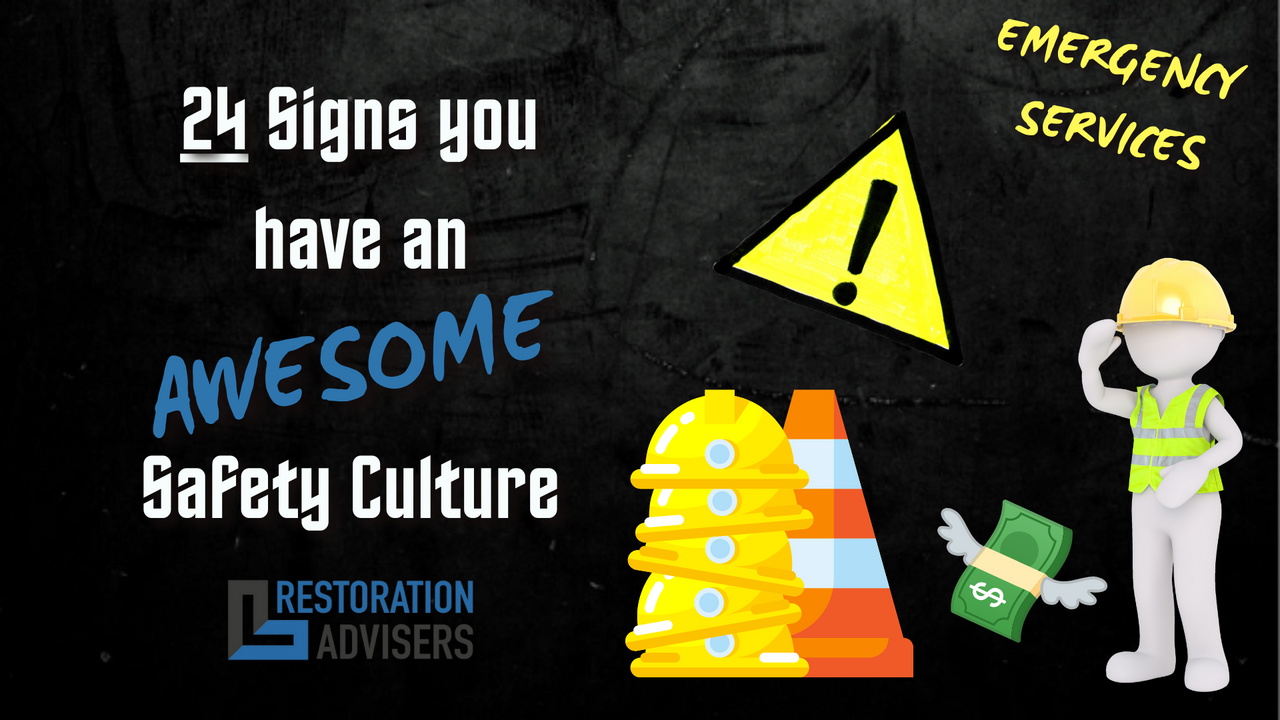
24 Signs you have an AWESOME Safety Culture
Jun 07, 2022Let's be honest, safety isn't always something we think of when we get that call for an emergency service lead.
Sure, on some level, it's always there.
But being that far back in our minds is not a recipe for success. Safety is a MINDSET.
After over 20 years in this industry working across the US and in 11 other countries, I would like to think I have seen it all. But that would be reckless and exactly where people start to see cracks.
I say cracks because that's exactly how you should look at your culture. NO ONE ever has a 100% safe environment.
So we have these small (or large) tears where the accidents always occur.
These small cracks are quite harmless when we are smaller and have a tiny team. Then you are likely on almost all jobs and spot things very quickly.
It's when you build a large structure, more weight, more conditions on a foundation, that the weakness starts to become more exposed, and sometimes in an alarming or devastating way. way.
Having thousands of hours of project safety training and coordination, I can PROMISE you I understand how boring it can be. But it is also boring to sit in a hospital bed or at home, not making money because I was injured at work.
Safety is a mindset and yes....a culture.
We have assembled a few barometers to see where you may currently be and where you want to go in terms of a Safety Culture. Please share with your team and build enthusiasm around an otherwise blah topic.

1. There is visible leadership commitment at all levels of the organization.
Leadership commitment (or lack thereof) to safety will always show. What your organization’s leaders value is typically what gets done. In great safety cultures, leadership proves their commitment to safety through their actions and how they empower others throughout the organization to win with their safety initiatives.
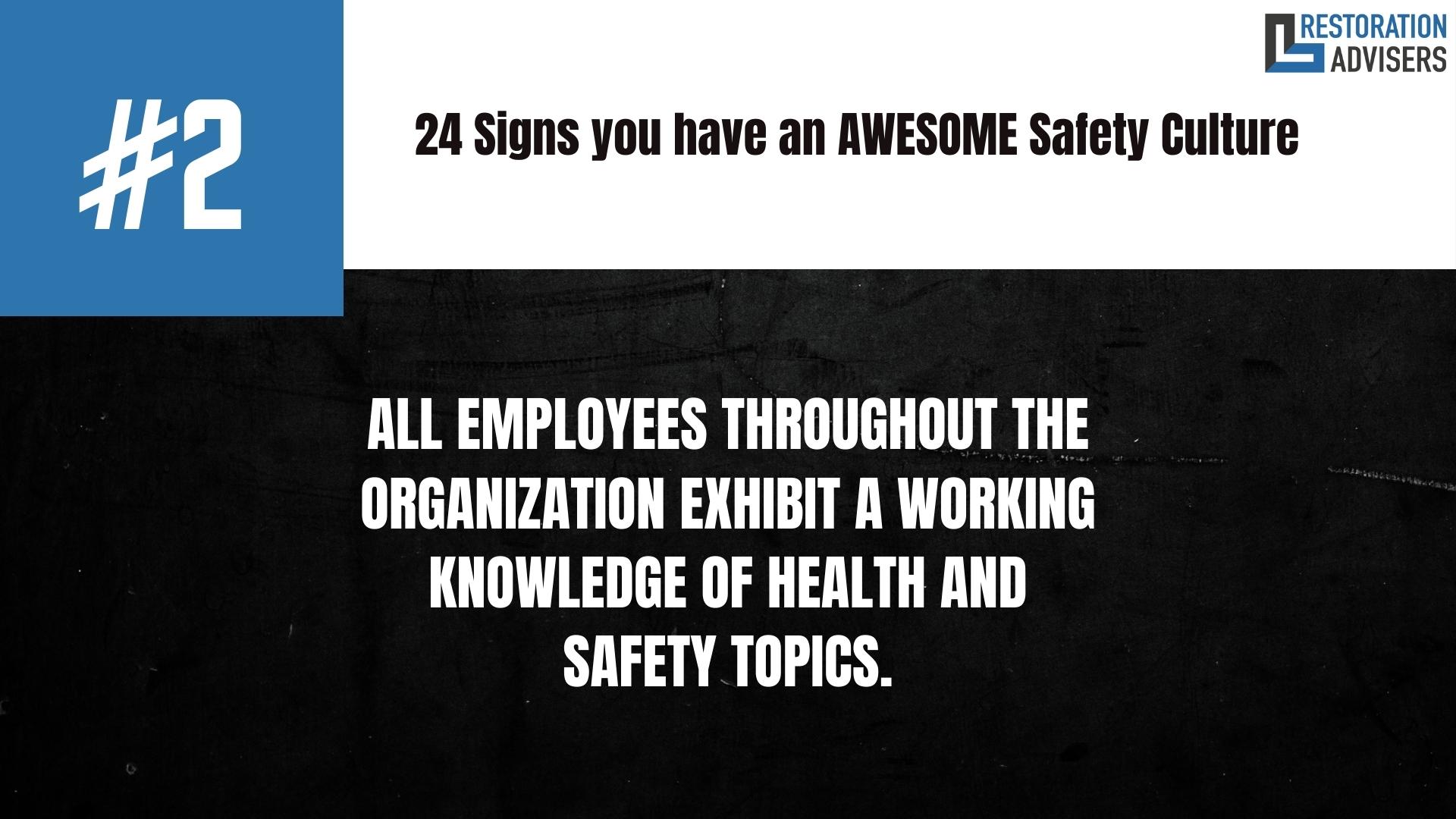
2. All employees throughout the organization exhibit a working knowledge of health and safety topics.
When you value something, it’s worth the time and energy it takes you to excel at it. In great safety cultures, all employees throughout the organization have invested in a working knowledge of health and safety topics. In order words — they’re competent in safety. They know their roles and responsibilities. They know their stuff.
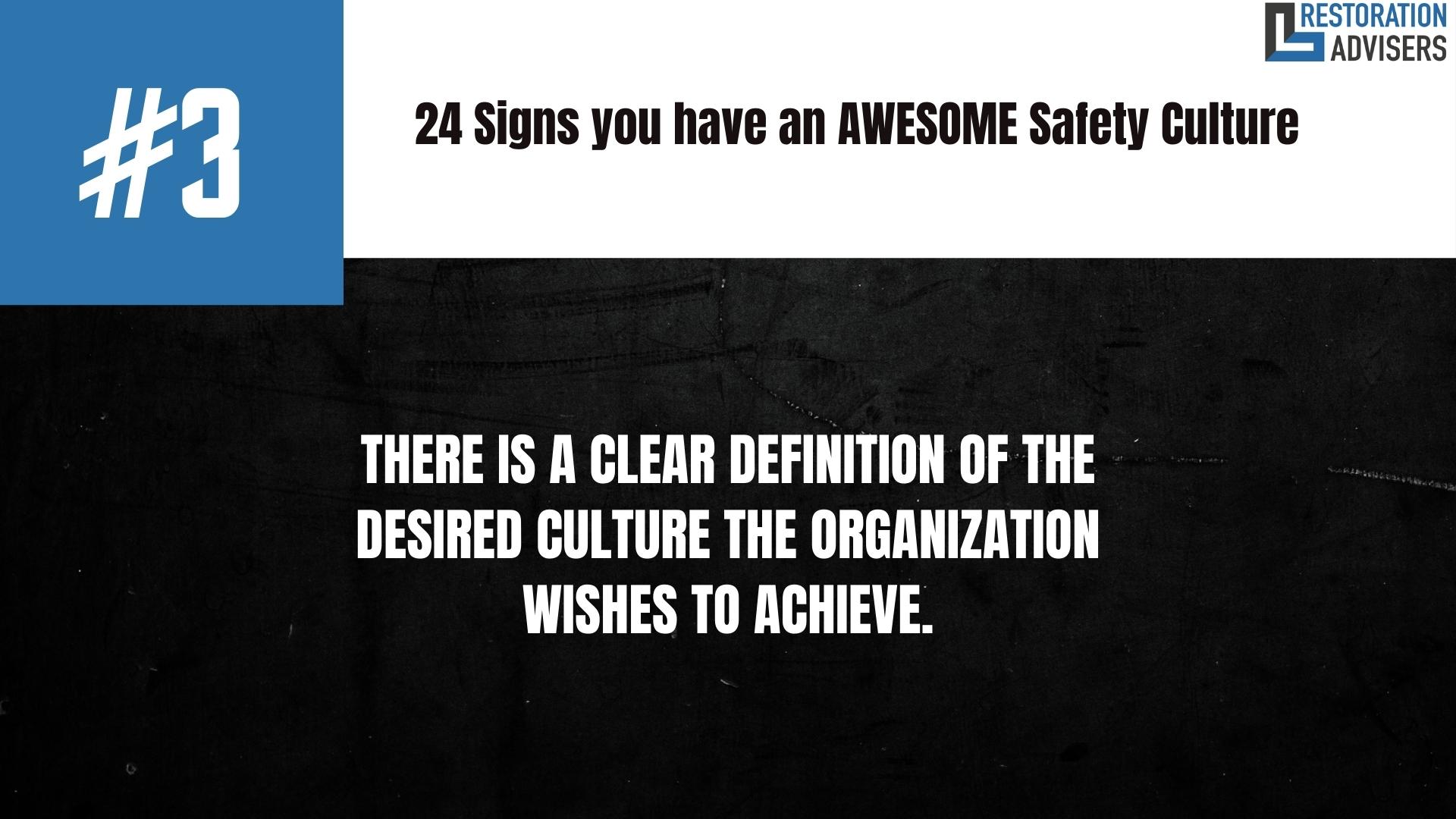
3. There is a clear definition of the desired culture the organization wishes to achieve.
How do you create movement toward the safety culture your organization wishes to achieve? You set a goal. You write it down. You measure where you’re at. You develop a plan to make it happen. It’s a simple strategy, yes, but not simplistic. Make sure you develop a plan that includes a clear definition of what your desired safety culture looks and feels like.
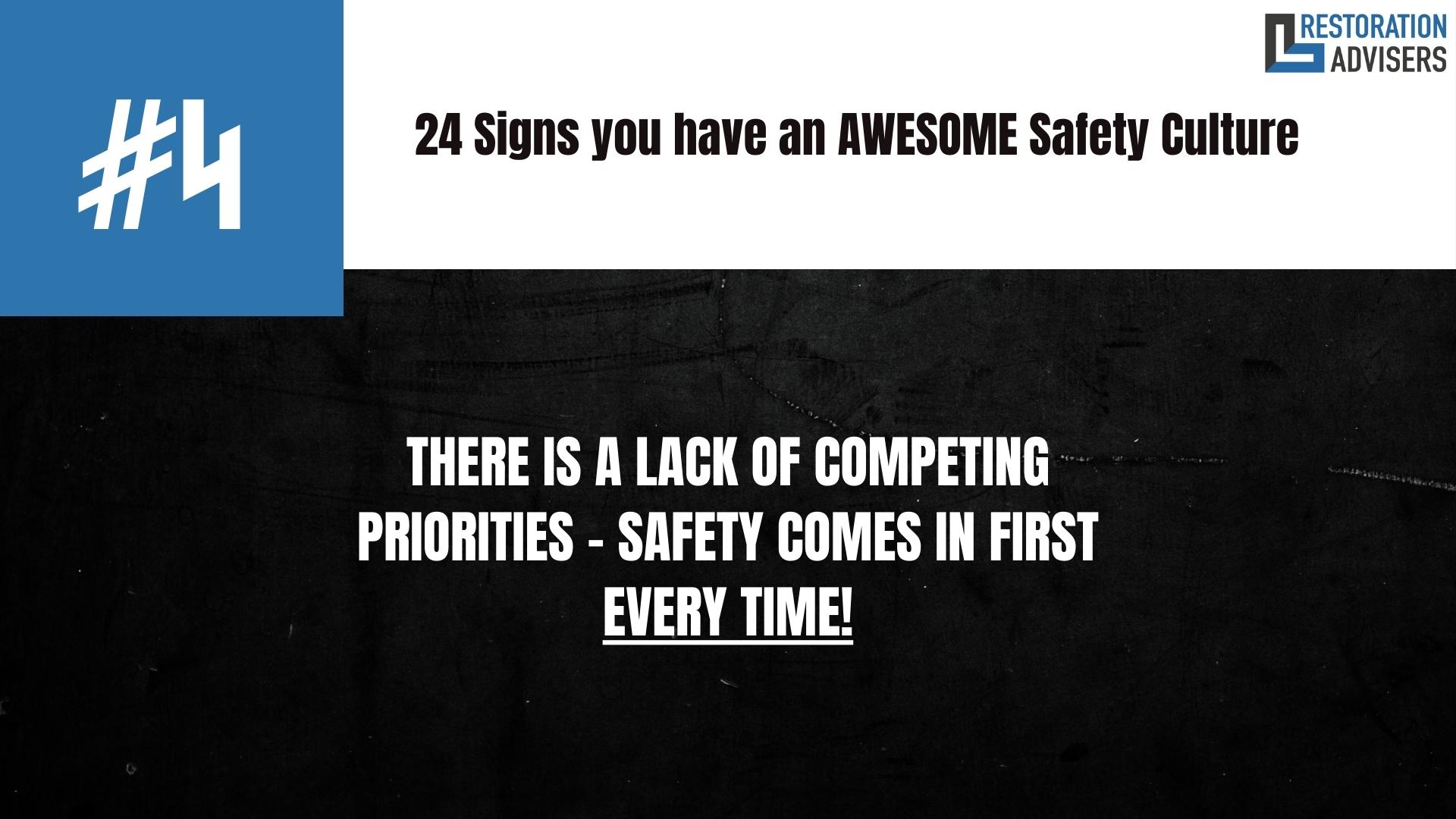
4. There is a lack of competing priorities – safety comes in first every time!
Who wins the showdown between production and safety at your organization? Does safety win every time or only when it’s the easy and convenient option? Safety needs to win every time or you’ve developed a toxic culture. It’s that simple.
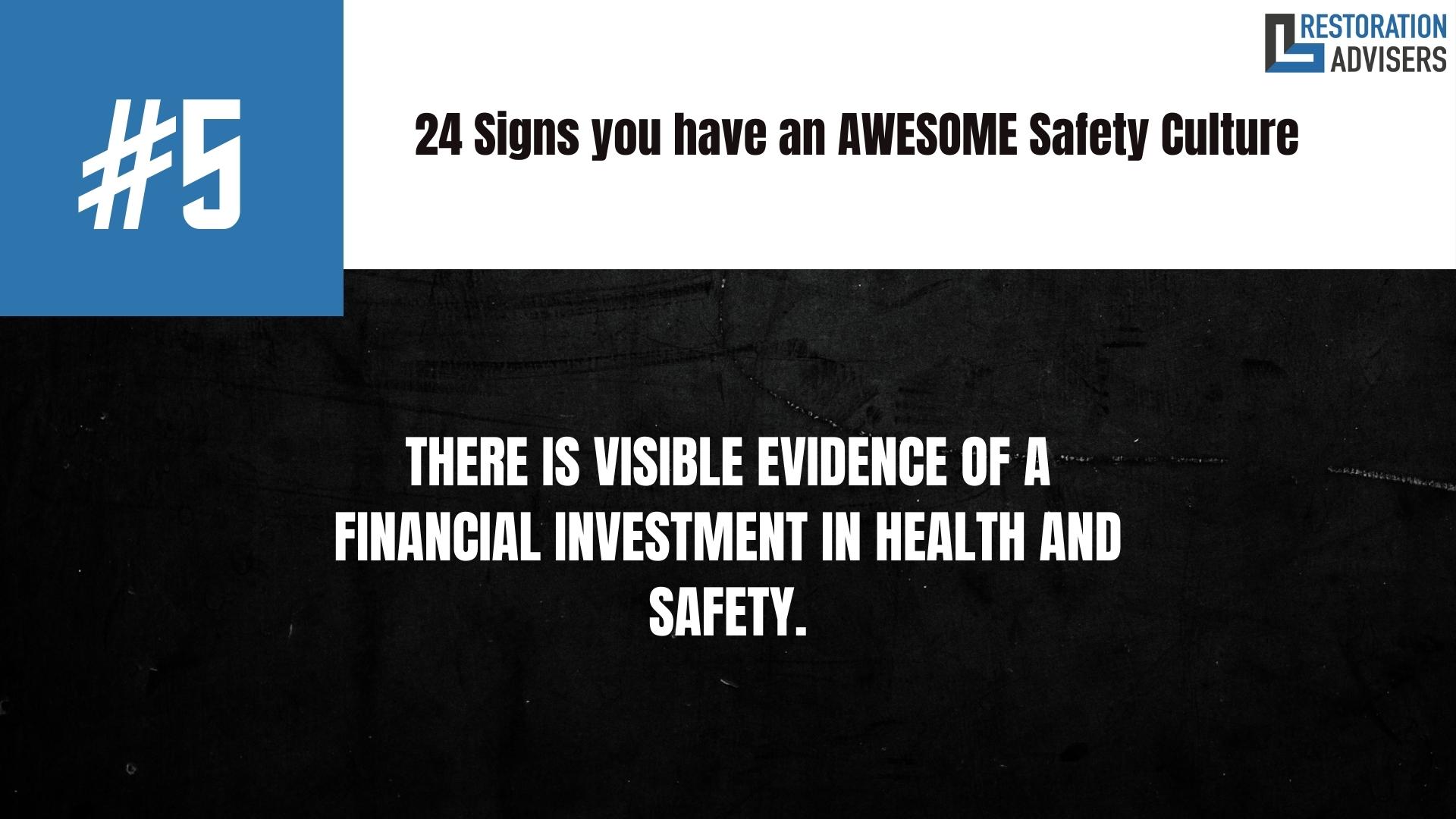
5. There is visible evidence of financial investment in health and safety.
Safety slogans are great, but creating a winning safety culture requires resources. Improvements need to be made. Problems need to be solved. If funding a safety project is a constant battle and there is no evidence of financial investment in safety, you may have a safety culture issue.
We STRONGLY recommend a budget line be added to ensure you make advancements.

6. Opportunities for improvement are identified and resolved before a problem occurs.
Proactive organizations identify issues before they become costly problems and injuries. Are you passively reacting to every injury? Or are you proactively finding risk factors and putting control measures in place? Safety leaders that are ahead of the curve identify and resolve issues before a more serious problem occur down the road.
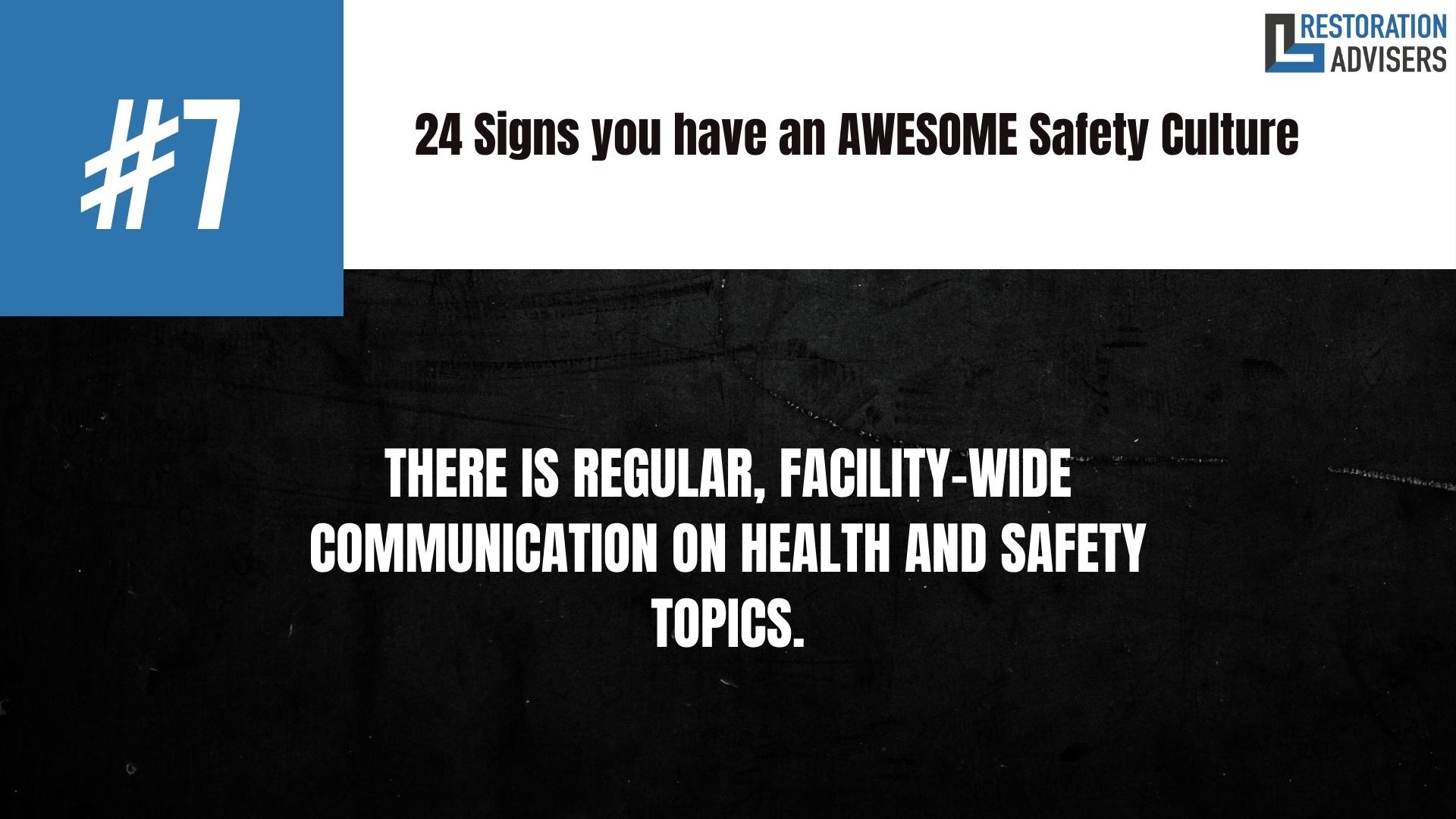
7. There is regular, facility-wide communication on health and safety topics.
Communication, communication, communication. An internal safety communication process increases awareness of safety topics and transfers knowledge to empower your people to be successful. We recommend twice a month for the three months. Then have breakout committees delegated to create components and then gather monthly.
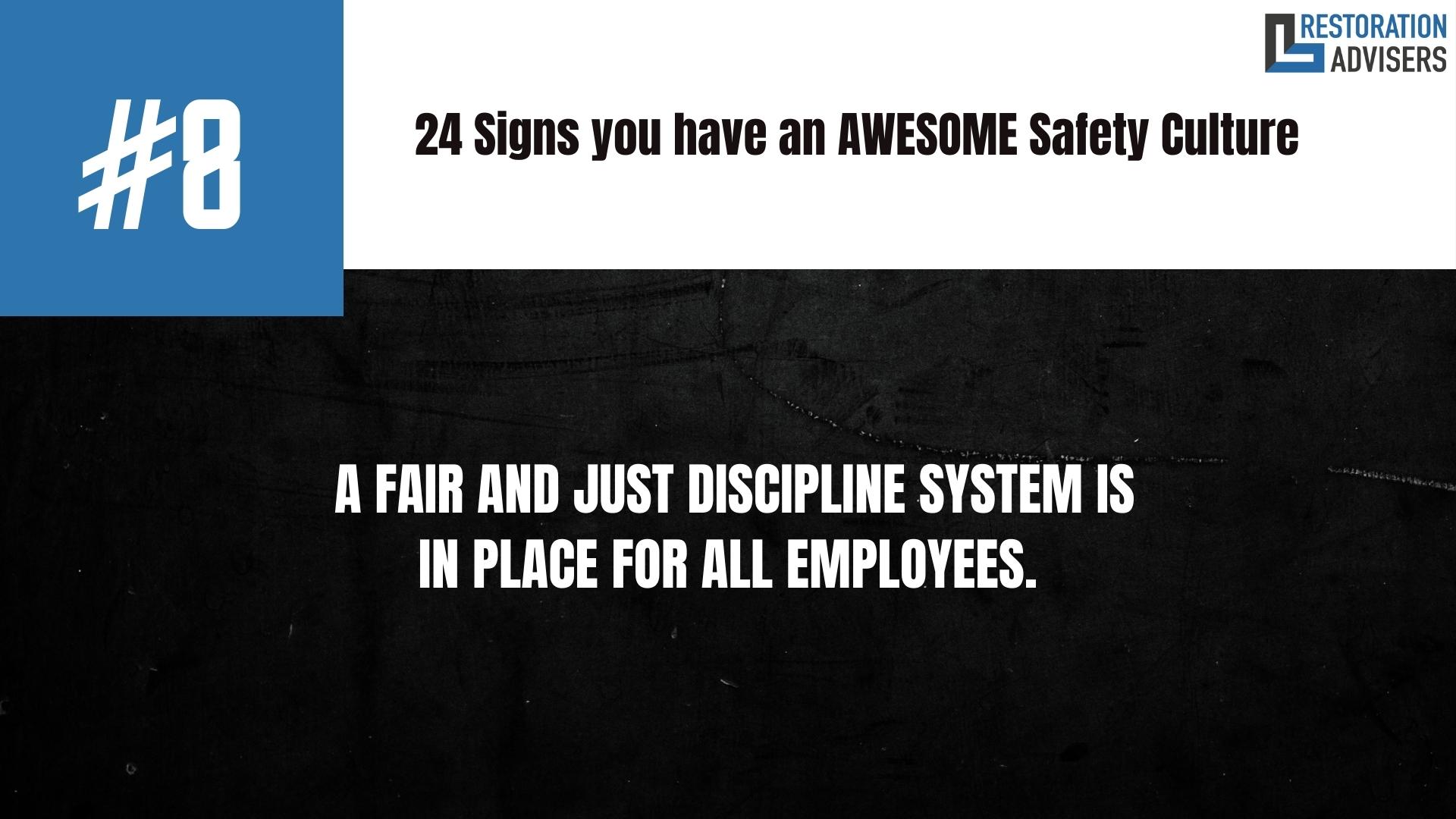
8. A fair and just discipline system is in place for all employees.
We live in a world of accountability. There are your actions and there are the consequences. Instituting a fair and just discipline system for safety behaviors is a necessary step to follow through on your claim that safety is important to you. The "right" team members won't have a problem with your policy as safety is nothing to let slip.
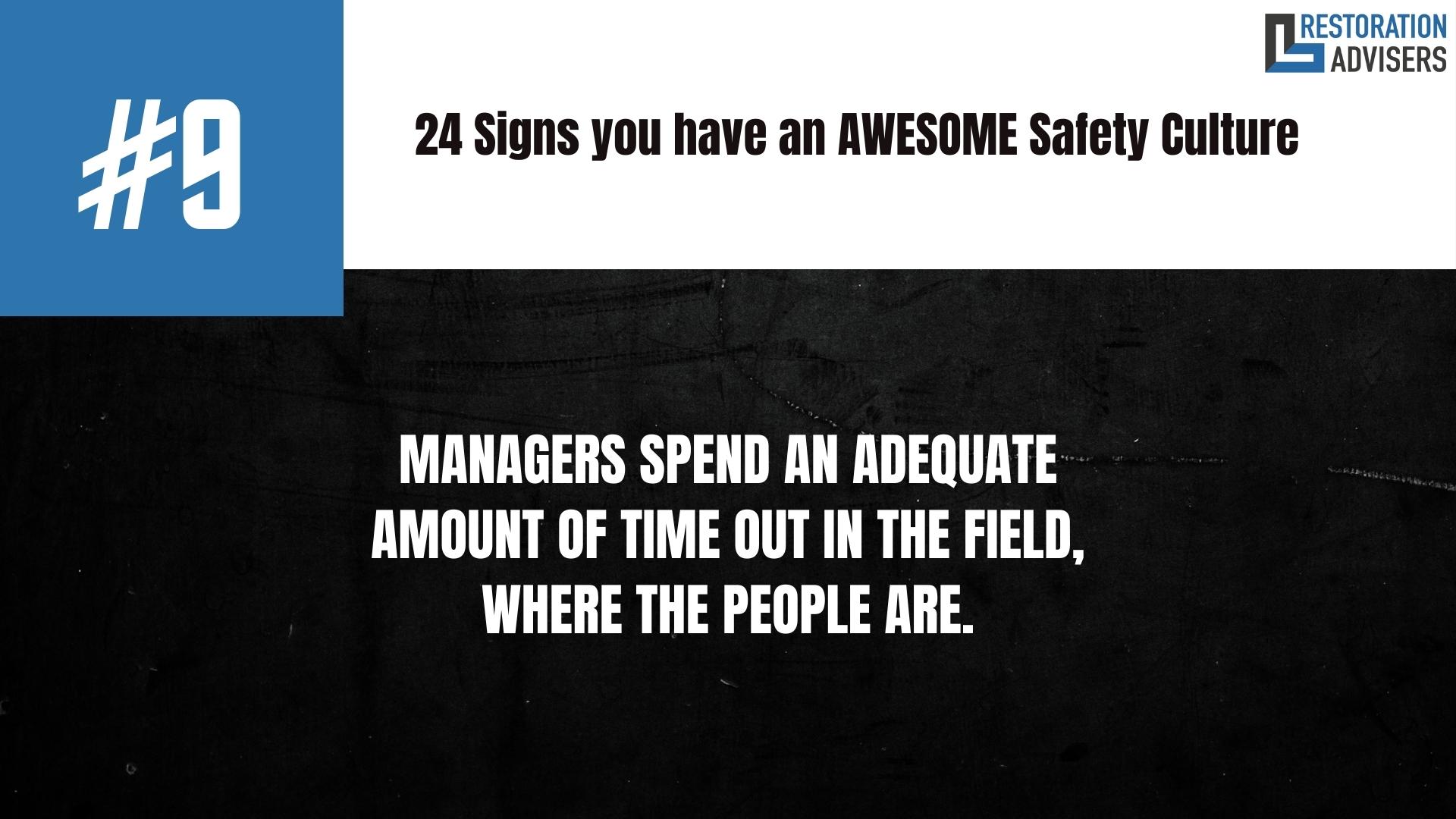
9. Managers spend an adequate amount of time out in the field, where the people are.
Great safety leaders spend time out where the people are. It’s where the real work gets done — on the projects. That’s where you can find problems. It’s where you can talk to operators and get their feedback. It’s where you’ll be seen (and respected) as the safety leader. You have administrative duties, yes. But the great ones get out there and get their hands dirty.
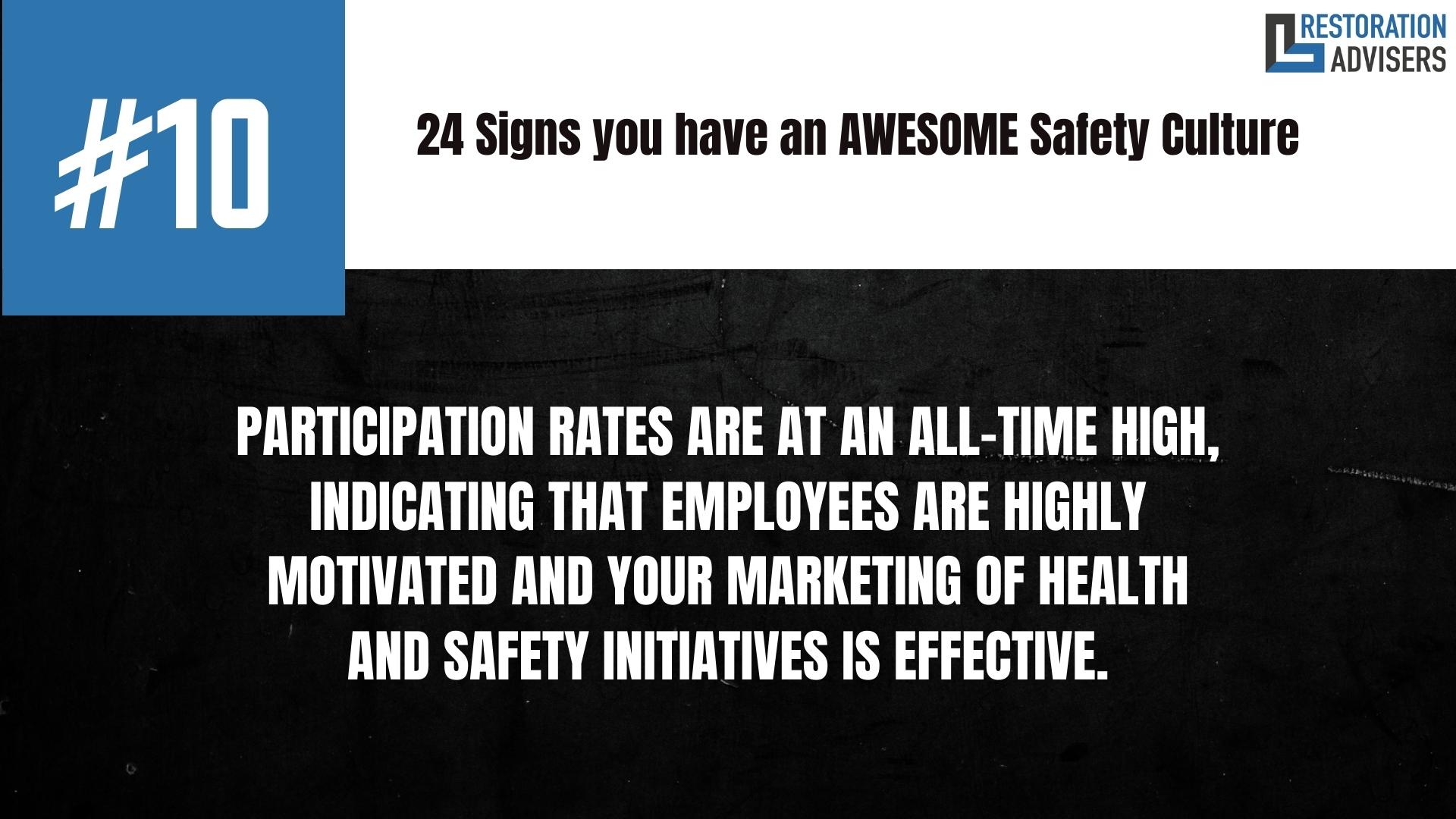
10. Participation rates are at an all-time high, indicating that employees are highly motivated and your marketing of health and safety initiatives is effective.
Safety success tends to breed more success. Safety culture is the vehicle that drives this phenomenon. When participation rates are at an all-time high, you’ve been able to build buzz and positive momentum for your future efforts. Keep it going.
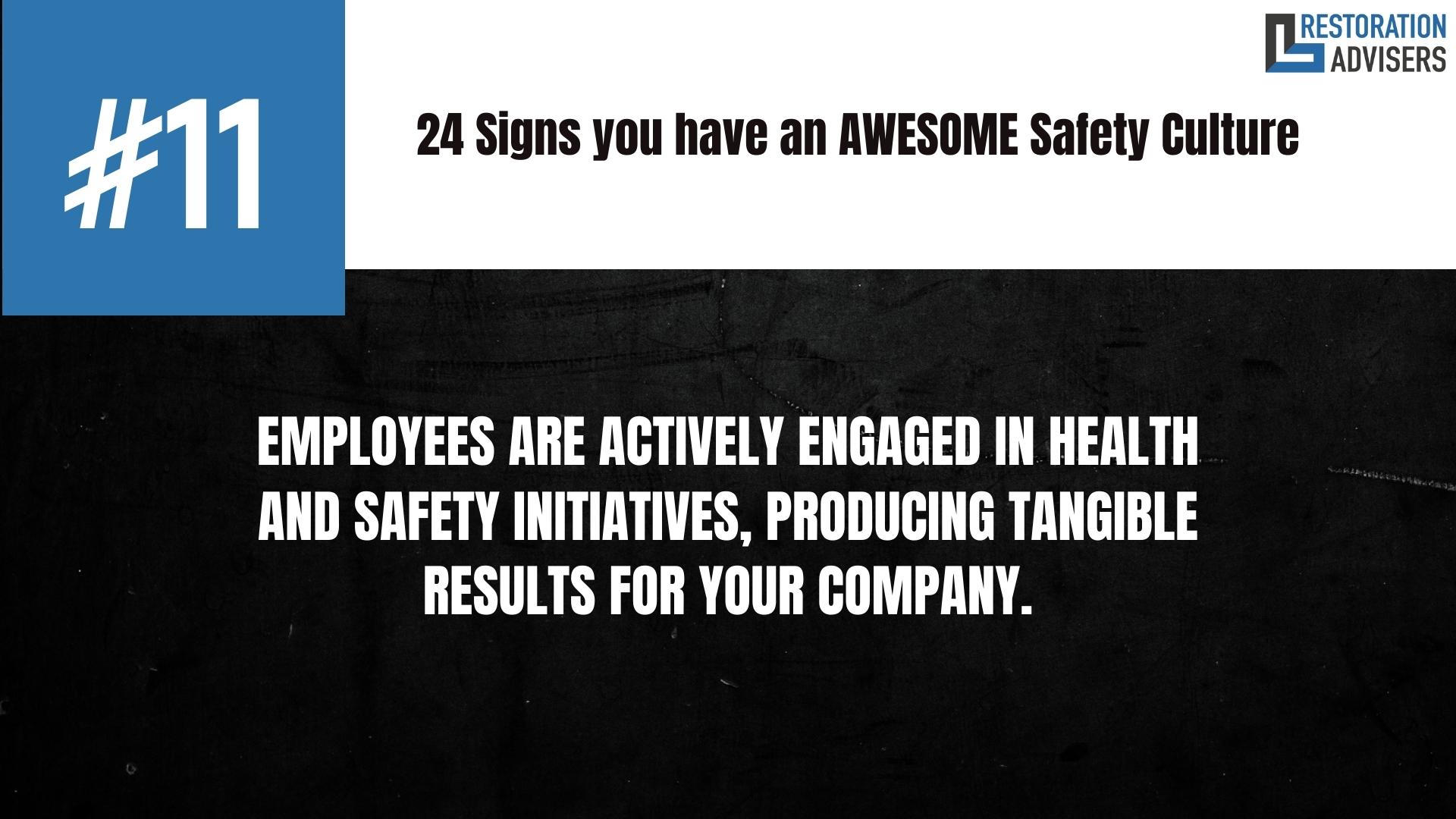
11. Employees are actively engaged in health and safety initiatives, producing tangible results for your company.
Are your employees engaged in health and safety initiatives? Or are they dismissive, leaving you wondering if you’re getting through at all? Engaged employees are more productive, giving you tangible results and feedback.
We strongly recommend creating "micro-committees" around particular initiatives.
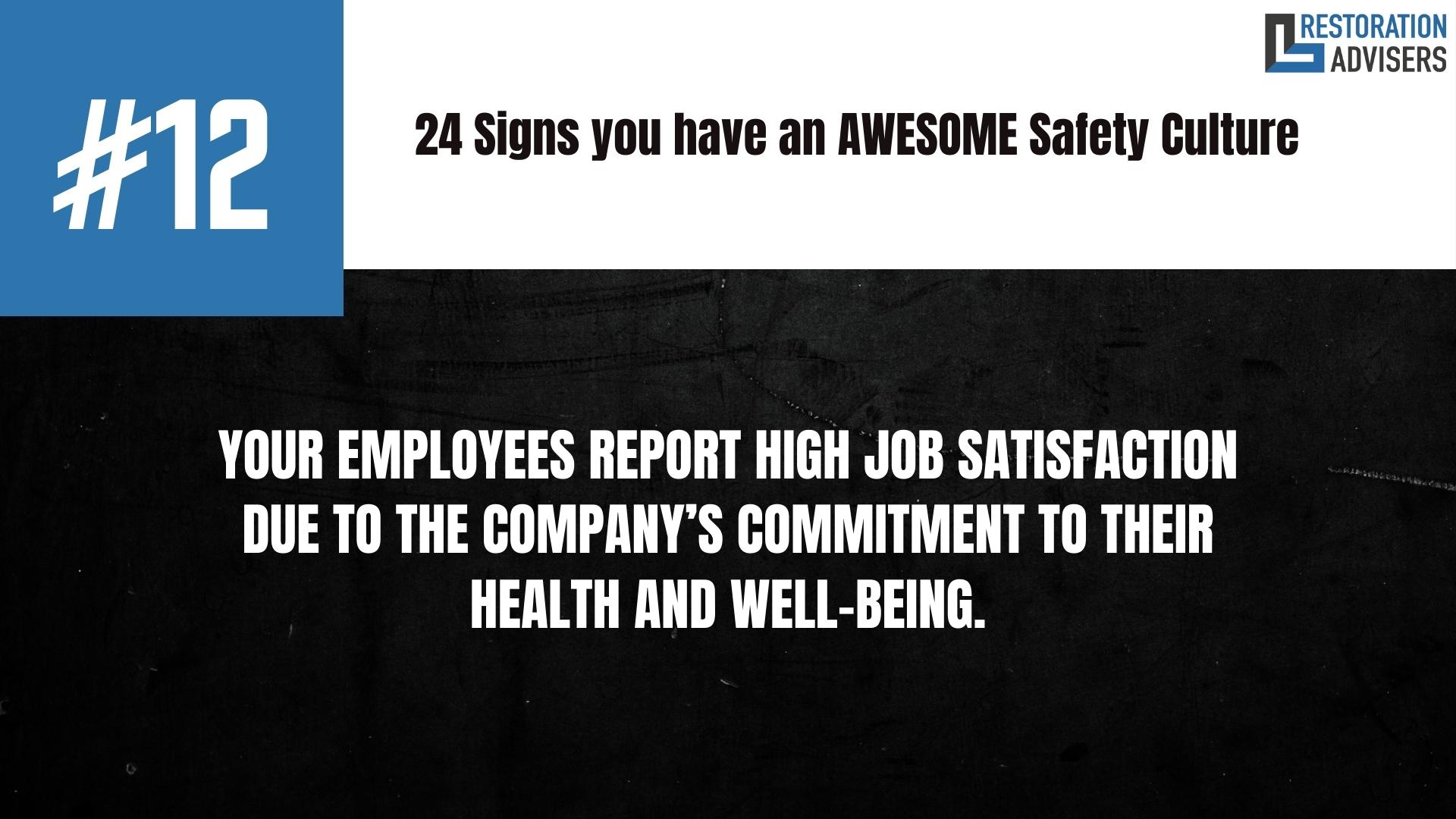
12. Your employees report high job satisfaction due to the company’s commitment to their health and well-being.
Employee retention and engagement is a focus point for organizations around the world, and rightfully so. With the skills and talent gap growing wider and wider as Baby Boomers retire, engaging your workforce through excellence in health and safety builds culture. Do this right and you’ll find yourself with highly satisfied employ
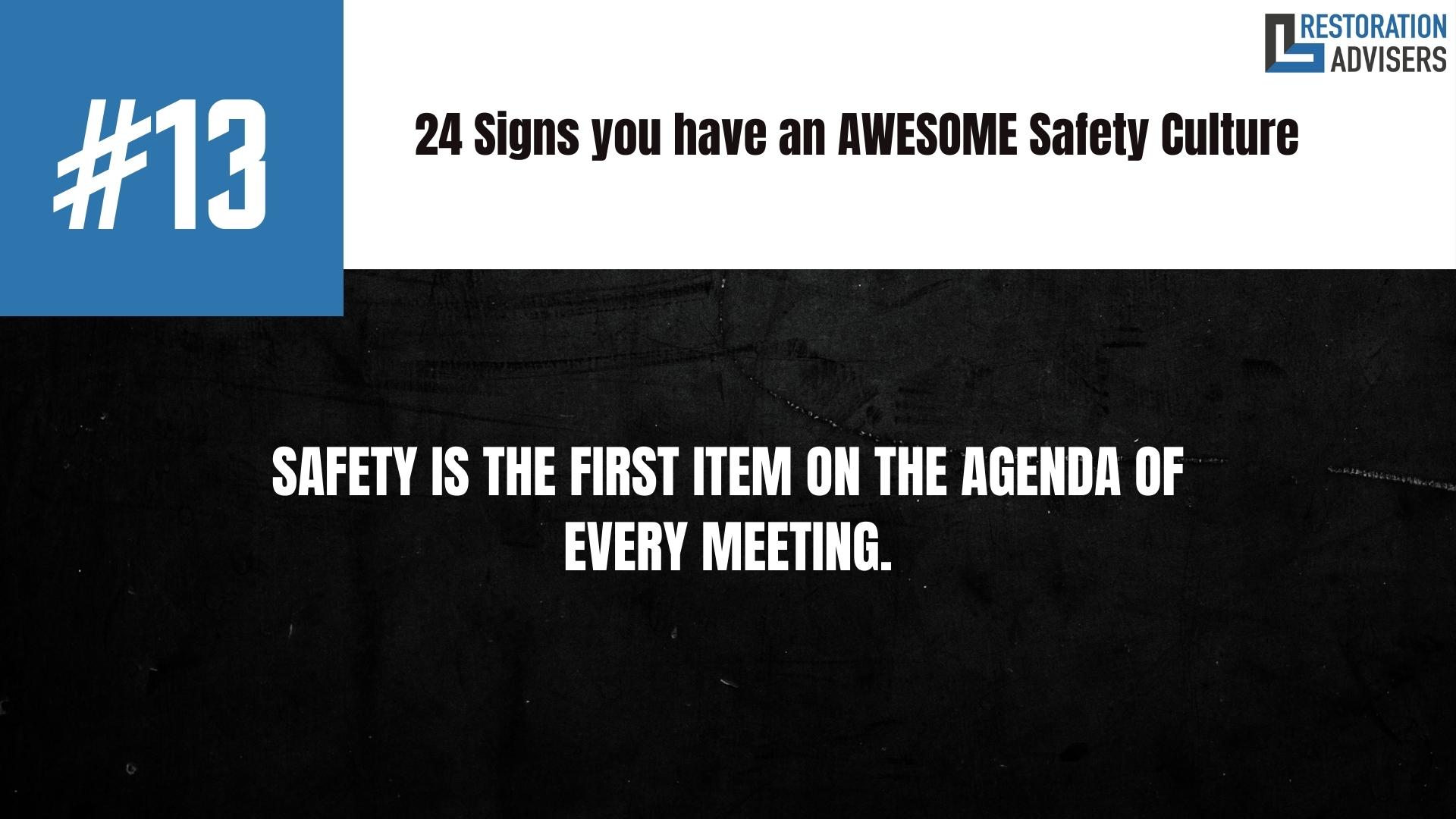
13. Safety is the first item on the agenda of every meeting.
Is safety at the top of your agenda sheet? I hope so. If not, I bet I can guess what the safety culture is like at your organization. Either put safety first or send a loud and clear message to everyone at the meeting that you don’t truly care.

14. The well-being of your team is never just a talking point. You must MEAN it.
Is safety at the top of your agenda sheet? I hope so. If not, I bet I can guess what the safety culture is like at your organization. Either put safety first or send a loud and clear message to everyone at the meeting that you don’t truly care.
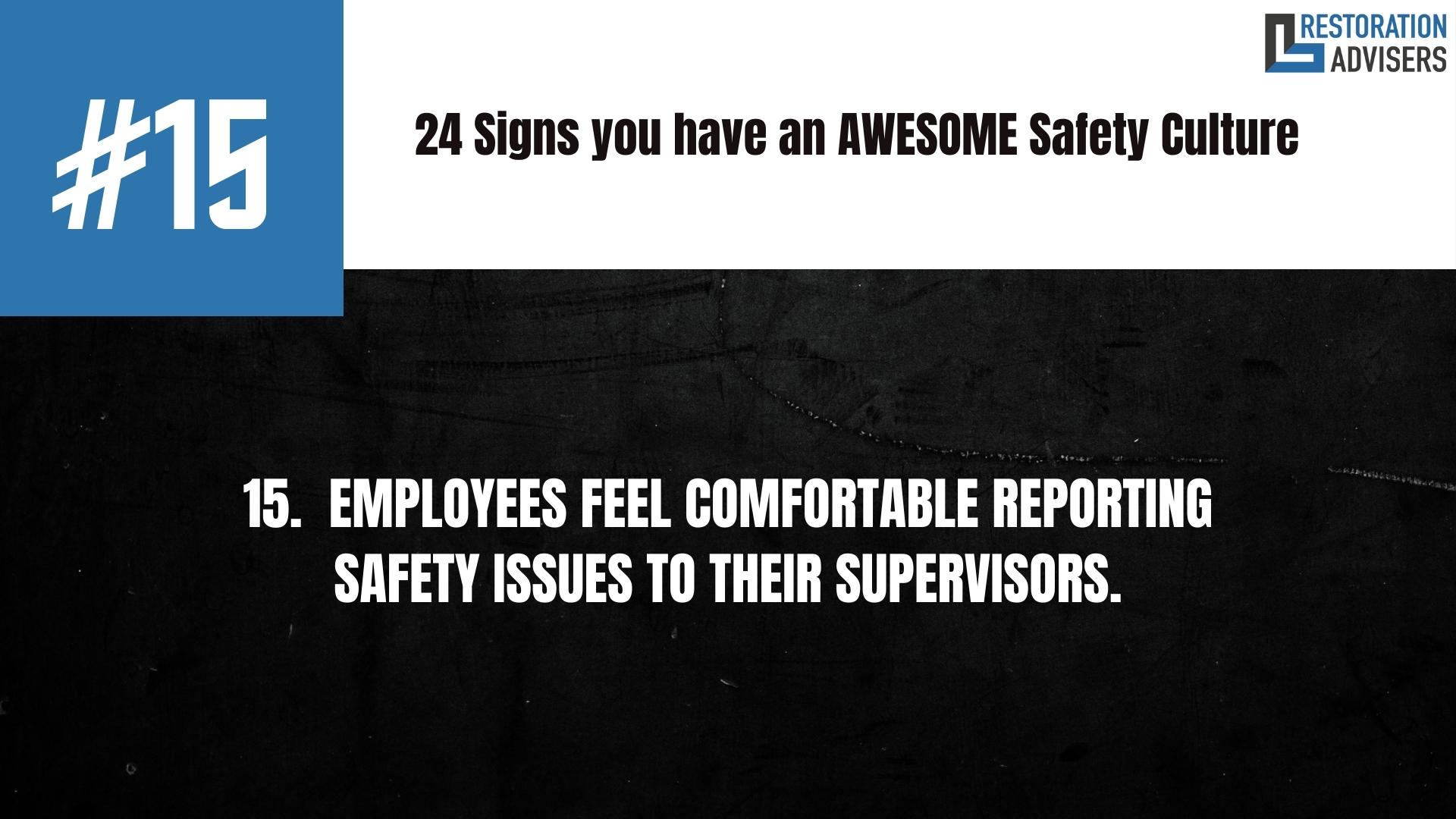
15. Employees feel comfortable reporting safety issues to their supervisors.
Do your employees feel comfortable reporting a safety issue to supervisors? Or do they feel like they will be ignored or (even worse) punished for coming forward? This is a huge indication of the culture you’re molding. Employees should feel encouraged and met with praise when they report safety issues.

16. Regular, detailed audits of the company’s health and safety program are conducted by an external auditor.
Great safety leaders are confident enough to be audited by an external auditor. It’s one thing to do an internal audit (and pat yourself on the back). It’s another thing to bring in an outsider to do an external audit (and meet the challenge head-on).
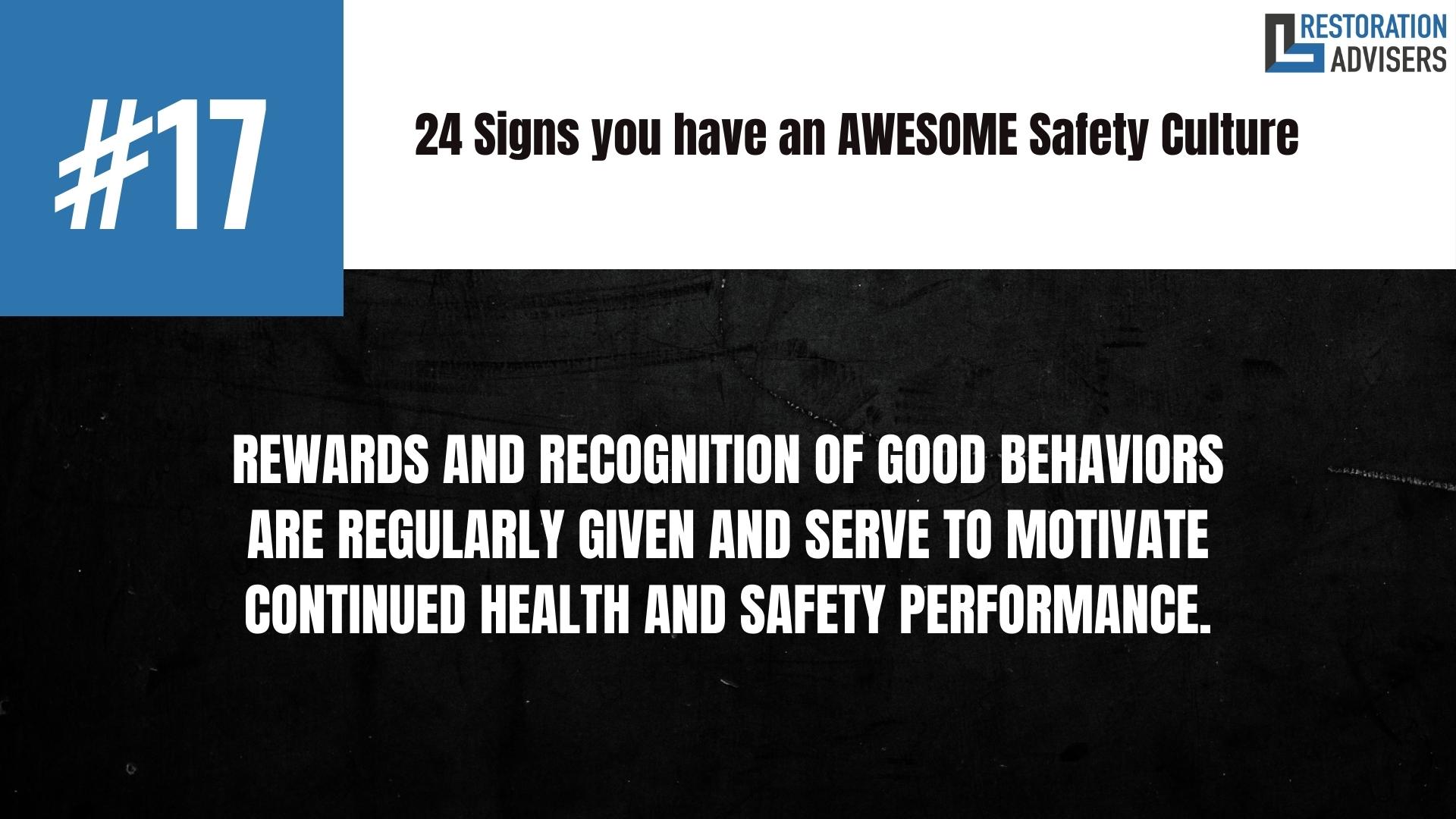
17. Rewards and recognition of good behaviors are regularly given and serve to motivate continued health and safety performance.
Positive safety behaviors should be awarded and these awards should motivate continued health and safety performance. Do you know what employees value but don’t get nearly enough? Recognition of a job well done. Recognize and reward positive behaviors. The word will get out.
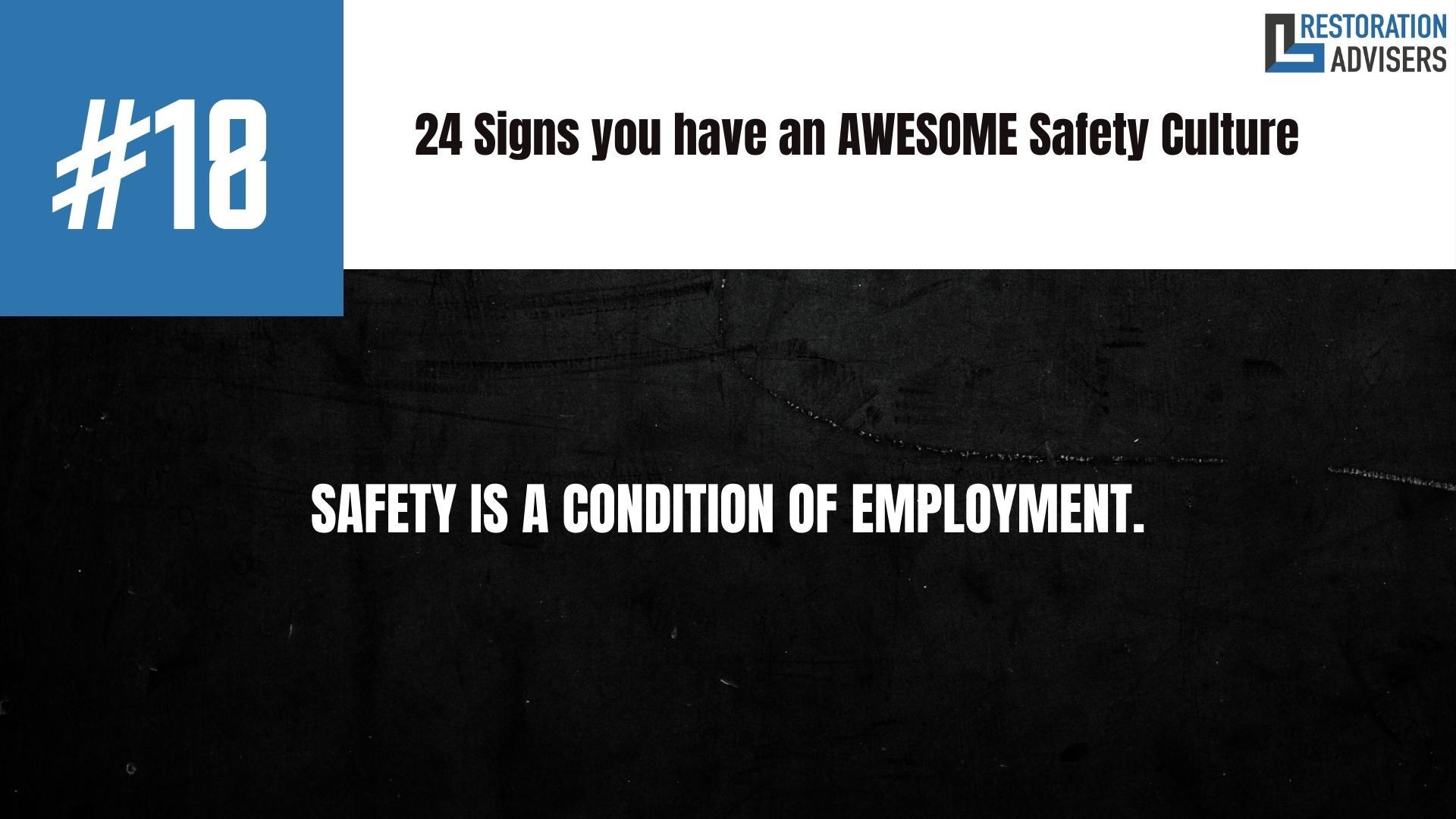
18. Safety is a condition of employment.
Can you really afford an employee who thinks they are above the rules when it comes to safety? Lives are on the line. Safety should be a condition of employment. If your organization values safety above all else, you make safety a fundamental value. Any employee who doesn’t share this value should be asked to leave and go work somewhere else.
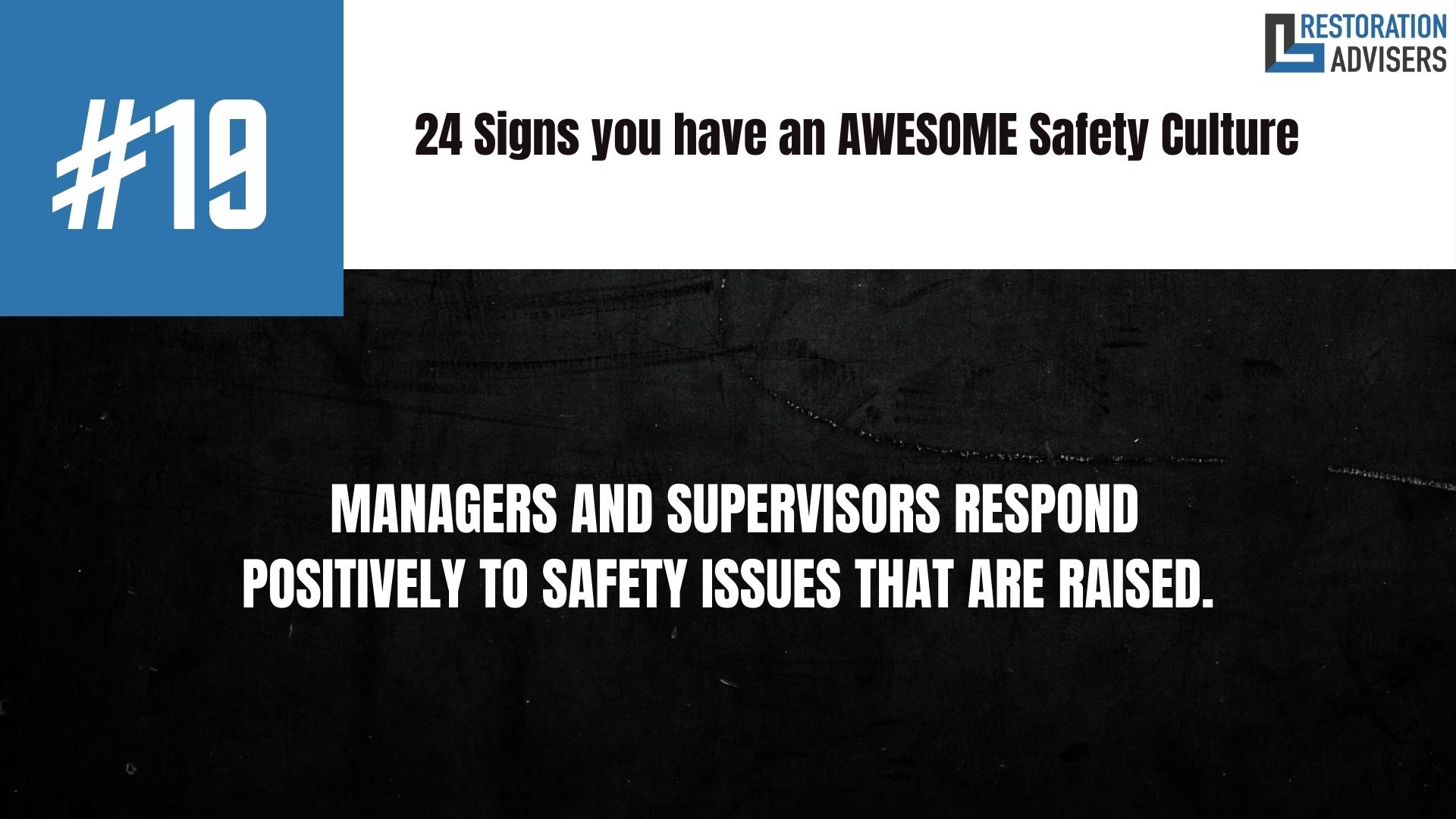
19. Managers and supervisors respond positively to safety issues that are raised.
Good managers and supervisors understand that when employees raise a safety issue, it’s another opportunity for improvement. This opportunity mindset allows them to respond positively to the employee that raised the issue and escalate the issue far enough to get a solution put in place.
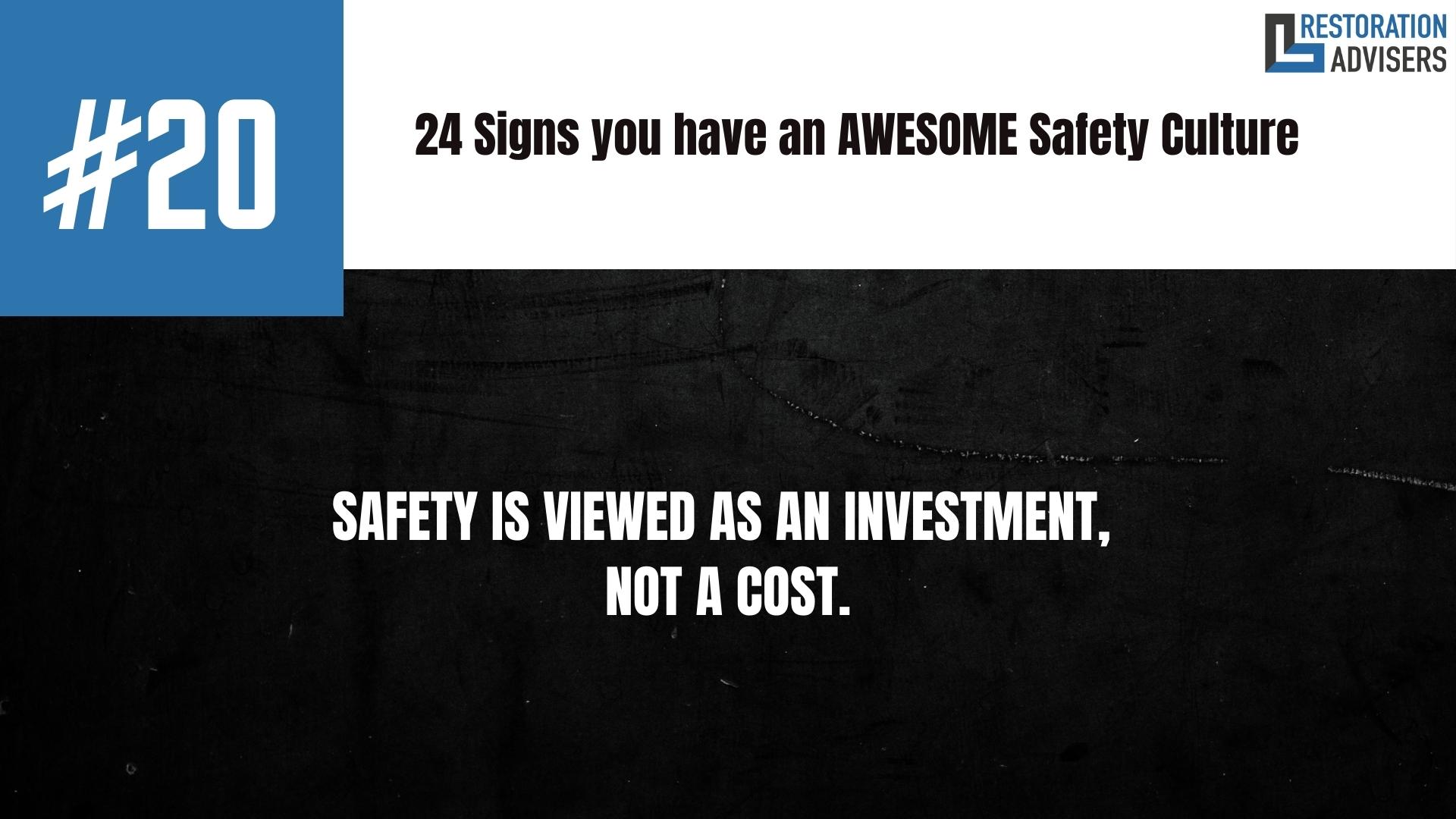
20. Safety is viewed as an investment, not a cost.
Companies that perform well in safety also perform well in business. Knowing the true value of safety, organizations with a great safety culture view safety as an investment, not a costly and dreaded expenditure.
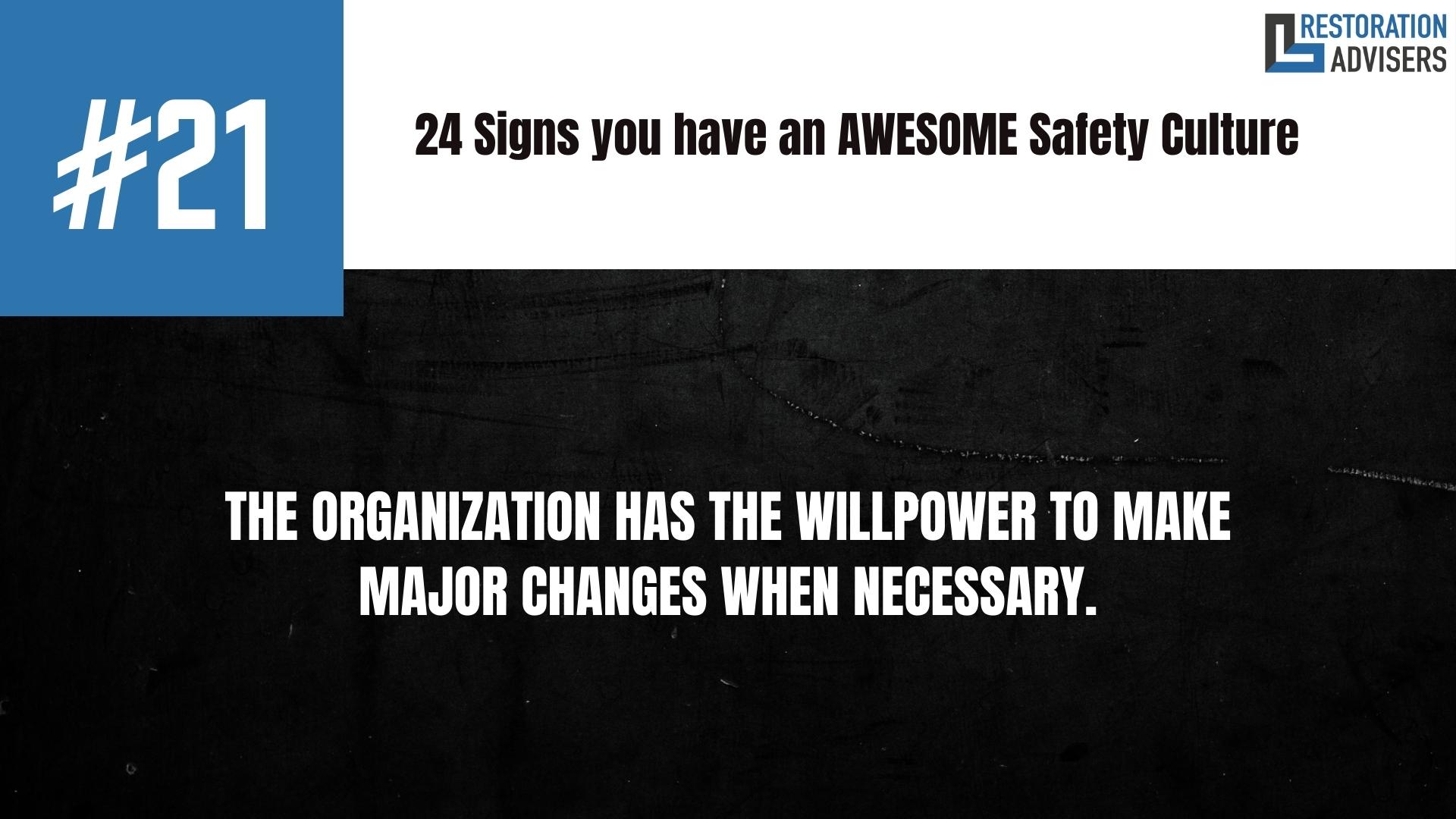
21. The organization has the willpower to make major changes when necessary.
Quick fixes and easy solutions are great. But your organization’s willpower will be tested when you need to make a major move. In great safety cultures, good intentions are backed by the willpower to endure major changes, expensive investments, and hard decisions.
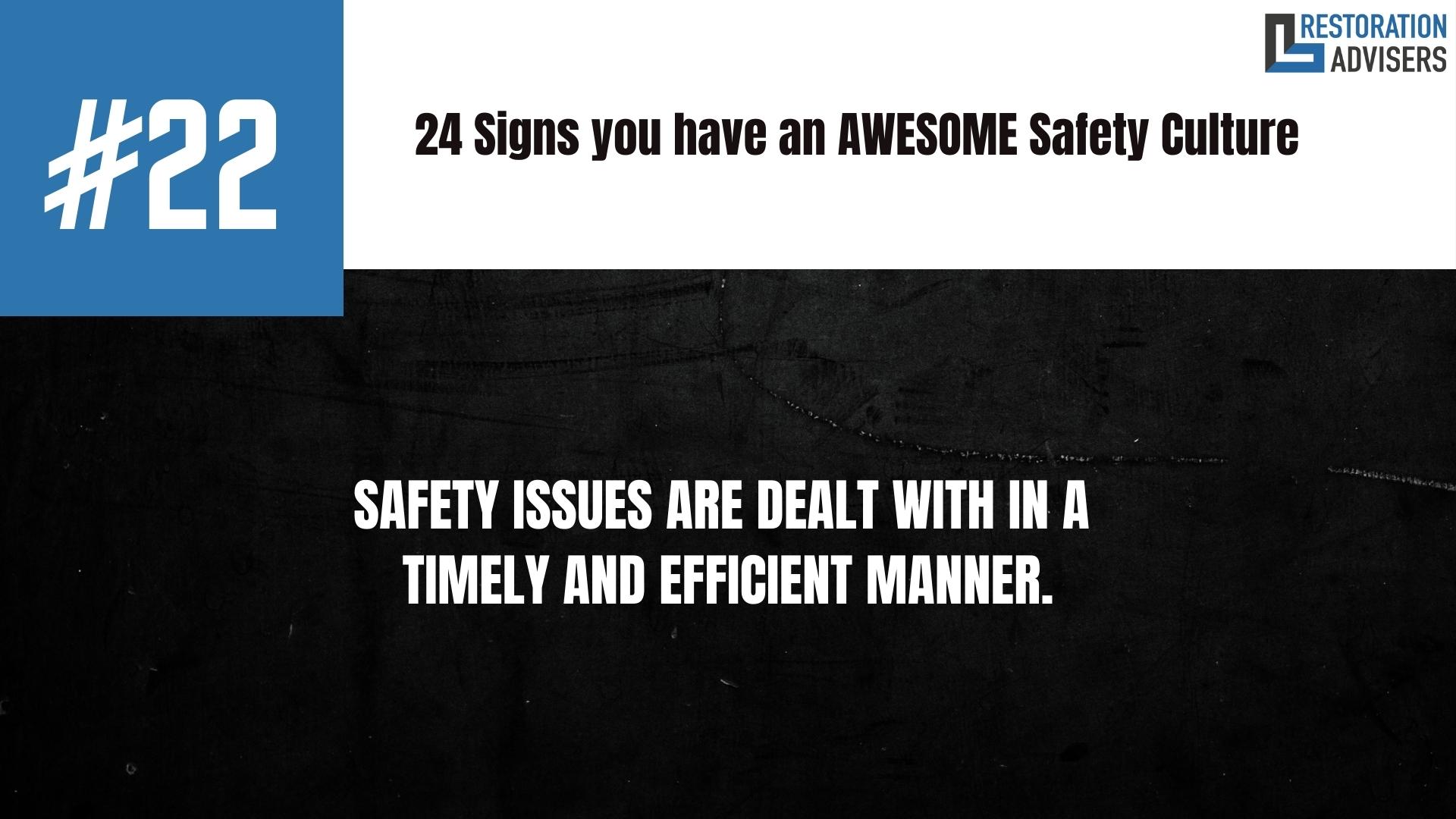
22. Safety issues are dealt with in a timely and efficient manner.
A functioning safety process deals with issues in a timely and efficient manner. Hazards are identified and controls are put in place within a reasonable time period. Knowing injury risks exist and not doing anything about them is a sure sign the organization has become complacent and the culture is rapidly deteriorating.
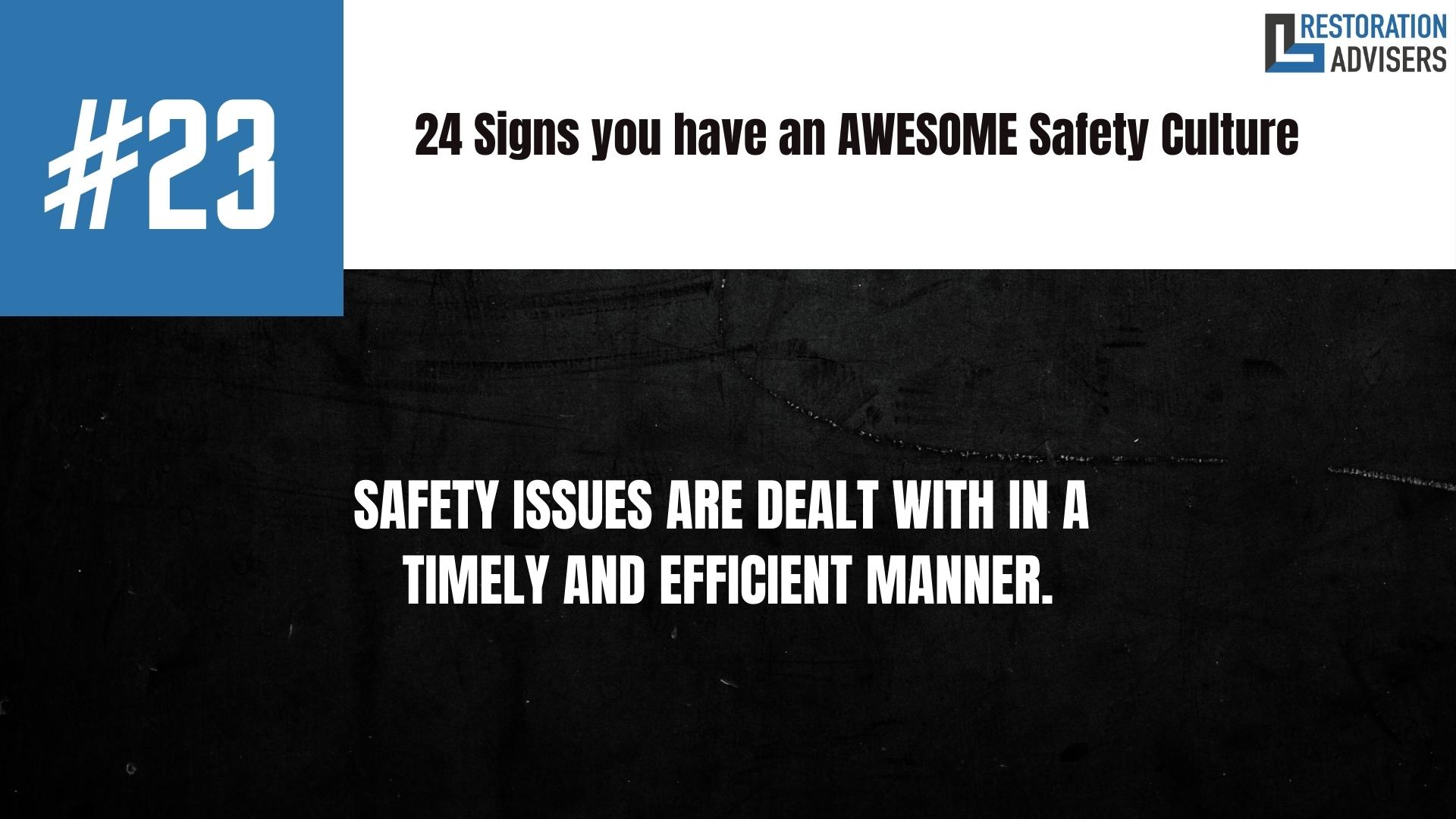
23. All employees throughout the organization are empowered with the necessary resources and authority to find and fix problems as they see them.
Your safety process should have clearly defined roles and responsibilities. In order for the people throughout your organization to successfully accomplish their role in the process, they will need resources and authority to make decisions.
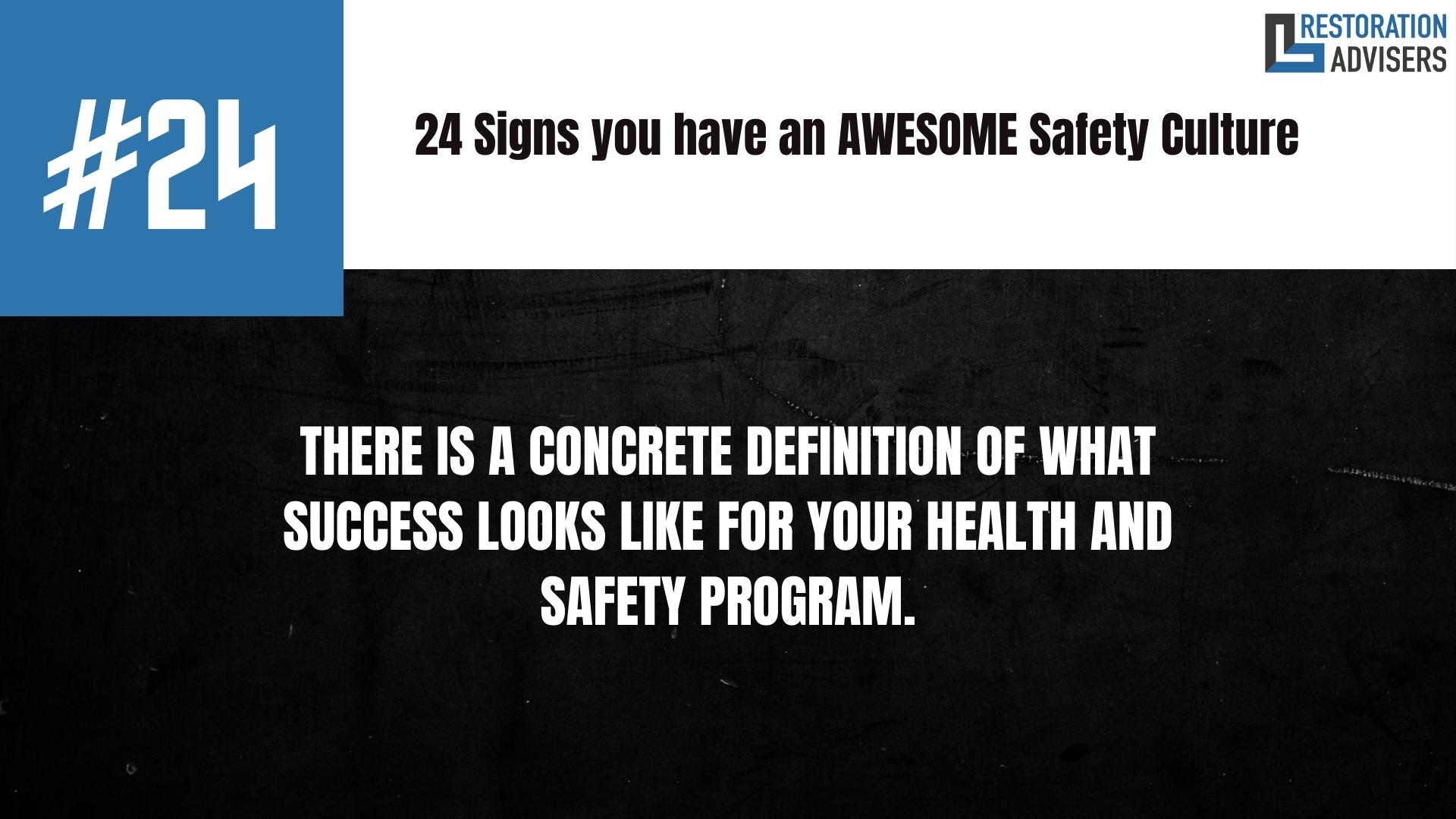
24. There is a concrete definition of what success looks like for your health and safety program.
How will you know when you’ve achieved your goals? You’ll know because you have set measurable goals and you know exactly what success looks like.
Well, how did you stack up?
If you didn't check all the boxes, it's ok. Most of the small to medium businesses are in the SAME boat.
That just means there is ALOT of room to improve. So get started. TODAY
If you find yourself needing a little nudge or even to discuss helping build a safety program that will scale with you and keep your team safe, reach out to us here at Restoration Advisers.
Email us at [email protected]
Get ALL 24 of these Signs to print and hang in your office
by requesting them below!!
Stay connected with news and updates!
Join our mailing list to receive the latest news and updates from our team.
Don't worry, your information will not be shared.
We hate SPAM. We will never sell your information, for any reason.
